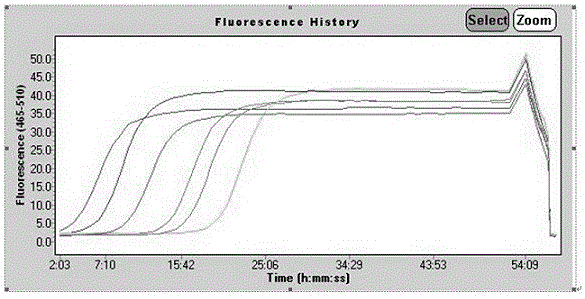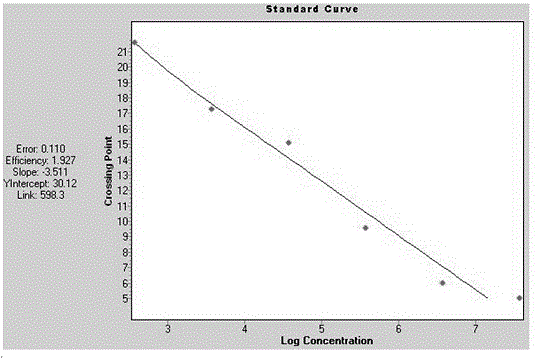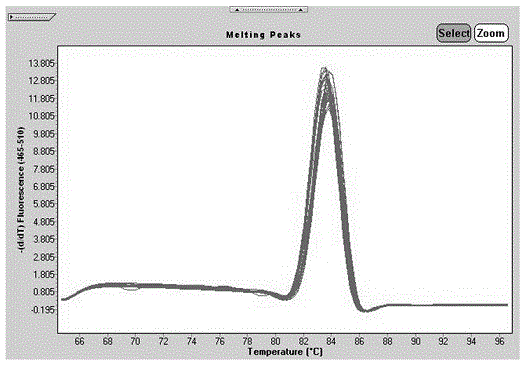Fluorescent quantitative PCR detection method for detecting colonization amount of tobacco anthracnose
A fluorescence quantitative and detection method technology, applied in the field of molecular biology, can solve the problems of indistinguishability, large error, time-consuming, etc., and achieve the effects of short detection time, reduced difficulty, and simple process
- Summary
- Abstract
- Description
- Claims
- Application Information
AI Technical Summary
Problems solved by technology
Method used
Image
Examples
Embodiment
[0040] 1. Extraction of DNA from susceptible tobacco strains
[0041] 1. Use scissors to cut the leaf tissue of the tobacco plant to an angular shape below 3mm, with a weight within the range of 10-100mg, put it into a 1.5ml Microtube, and freeze it at -20°C.
[0042] 2. Take out the frozen plant tissue and let it thaw at room temperature for about 5 minutes.
[0043]3. Gently centrifuge to collect the plant tissue at the bottom of the Microtube.
[0044] 4. Use the tip of the PipetTip to press the plant tissue to the bottom of the Microtube about 10 times for physical breaking.
[0045] 5. Add 400 μl of ExtractionSolution1 and shake vigorously for 5 seconds. If the plant tissue is still stuck at the bottom of the Microtube, flick the Microtube with your fingers to suspend it.
[0046] 6. Slightly centrifuge, add 80 μl of ExtractionSolution2, shake vigorously for 5 seconds. After adding ExtractionSolution2, a white precipitate was produced, and the solution became cloudy a...
PUM
 Login to View More
Login to View More Abstract
Description
Claims
Application Information
 Login to View More
Login to View More - R&D
- Intellectual Property
- Life Sciences
- Materials
- Tech Scout
- Unparalleled Data Quality
- Higher Quality Content
- 60% Fewer Hallucinations
Browse by: Latest US Patents, China's latest patents, Technical Efficacy Thesaurus, Application Domain, Technology Topic, Popular Technical Reports.
© 2025 PatSnap. All rights reserved.Legal|Privacy policy|Modern Slavery Act Transparency Statement|Sitemap|About US| Contact US: help@patsnap.com



